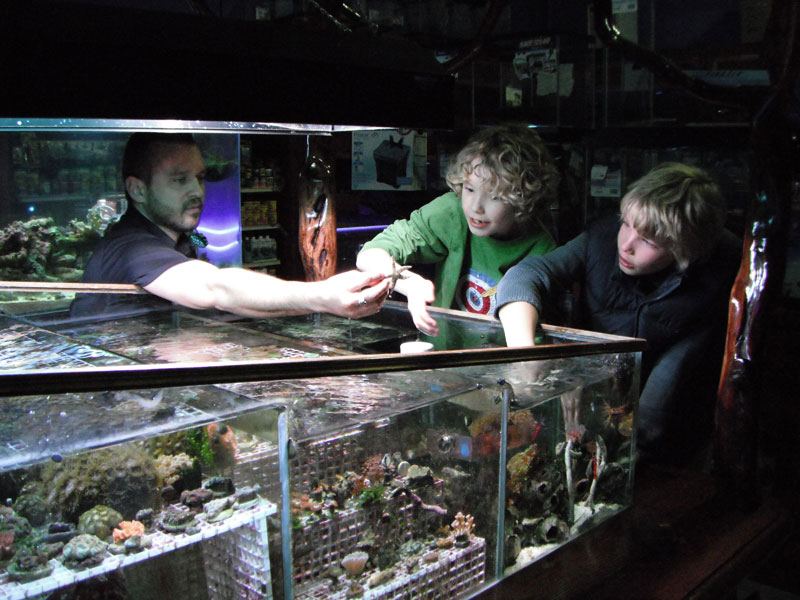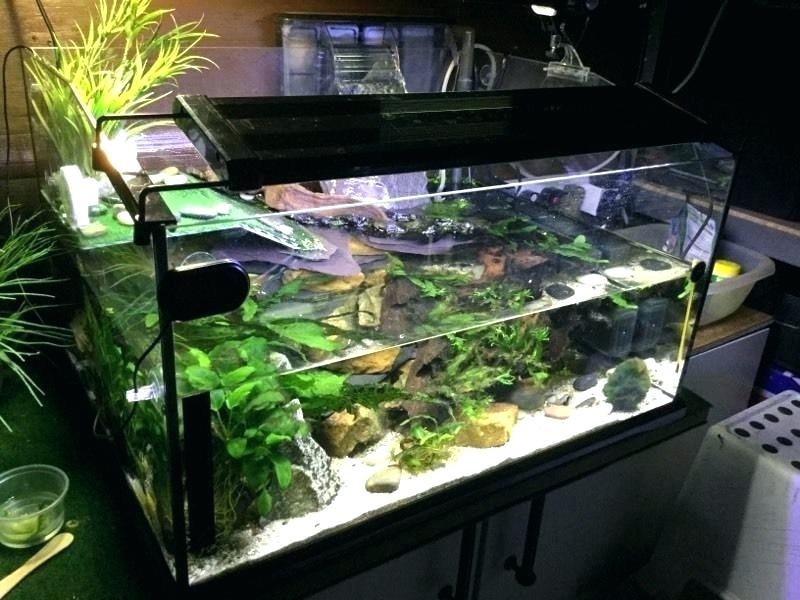If you have managed to get the larvae to survive until approximately 3-4 weeks, I offer you my sincere congratulations. We no longer have larvae, but juveniles. Now they are real mini-fishes: their tissues, organs and structures have been replaced by those of adults and now they only have a little more to grow.
We have reached a point where mortality decreases a lot and we can start preparing a bigger house for them: an aquarium. Preparing the aquarium is going to take some time, for the reasons we will see below. While you can keep them in the tupper, how I explained you in the larval breeding post, making their daily water changes.
We change the water daily for one reason: fish pee (and poop). We don’t take them out on the street like dogs, nor do we put cat litter on them, nor do we take them to a mini toilet for fish! But the truth is that all the fish waste, together with the decomposing food scraps, generate a substance that for them is very toxic (i.e. it harms them), called ammonia.
Ammonia irritates the gills, and makes the fish unable to breathe and die. That’s why we change some of the water every day, so that the ammonia doesn’t accumulate.
Aquarium cycle
In the aquarium we can create a more efficient invention than changing the water every day. There are “good” bacteria that degrade ammonia into less toxic substances for fish. We can make these beneficial bacteria grow in the filter of our aquarium.
The process by which these bacteria grow in the aquarium and transform ammonia into less toxic substances, is known as aquarium cycling and will last between 4 and 6 weeks, depending on how we do it.
To cycle the aquarium, we must first fill it with water, and put a filter. Next, we add a few food flakes. These will degrade and cause ammonia to form. The ammonia that will serve as food for bacteria called Nitrosomonas that will transform it into nitrites.
After a while, the nitrites will increase and other bacteria called Nitrobacter will begin to appear, eating the nitrites and converting them into nitrates. This process is known as the nitrogen cycle. When ammonia levels drop, we can start to put our fish in.
We can try to accelerate the cycle and reduce the time needed to put the fish, using for example remains of filtering material from already mounted aquariums. There are also good bacteria “in boats” that we can add directly to the water.
How to set up the aquarium
Where to place it and security considerations
Before starting to build the aquarium we must stop to think well where we are going to put it. The aquariums weigh a lot and changing them afterwards is not going to be an easy task.

The ideal thing is to put it in a place without direct light to avoid that algae grow and far from sources emitting heat. It can’t be next to something that can get damaged if it gets wet, like your mother’s favorite carpet or where the teacher leaves the exams.
If our aquarium measures more than 60 cm it is recommended to place it on tables specially designed for it, which in addition to being resistant are waterproof.
Before filling the aquarium, we must rinse it well with tap water, but NEVER use soap, detergents or other chemicals with absolutely nothing that will be in contact with the fish.
For safety reasons it is recommended that the cables of all electrical appliances make a loop before the plug, in case water falls accidentally, that this drips down and does not enter the plug. It is very important that before handling filters, heaters or anything that involves “putting your hand” in the aquarium, electrical appliances should be unplugged. Water and electricity are bad combinations.
Decoration
Another important decision is if we are going to put plants and ornaments. In science we call it environmental enrichment. It serves to make the aquarium more entertaining for the fish, and with it to diminish the stress. The more the aquarium resembles the place where they live in nature, the more comfortable they will be.
Plants can be natural or artificial. Natural plants have the advantage that they also help us to eliminate nitrates. If we put plants we will need a gravel so that they can put down roots. We have to take into account that some gravel can vary the parameters of the water.
If we are going to add all these elements it is better to do it before putting the water. First we add the gravel, making sure that the level is higher in the back and then we put over it the decorations and plants. There are even special non-toxic adhesives for aquariums. We can leave it as beautiful as we want, but trying not to put anything with which a fish can be hurt.
In order not to destroy the decoration, before pouring the water we can put a plate on top of the gravel and pour the water slowly over it.
Aquarium water parameters
If we manage to maintain the right water quality, our fish will be happy. They spend their life in the water, take oxygen from it, contact with their body… water is more important to them if possible than to us air.
The zebrafish is a strong fish. This means that it can tolerate a certain change in the parameters of the water, but we still have to be very careful with them. I do not intend at this point to make an exhaustive treatise on the biochemistry of water, but to highlight the most important aspects to bear in mind for the breeding of zebrafish.
The basic principles serve for the breeding of any tropical freshwater fish, although each species has its optimal development ranges.


